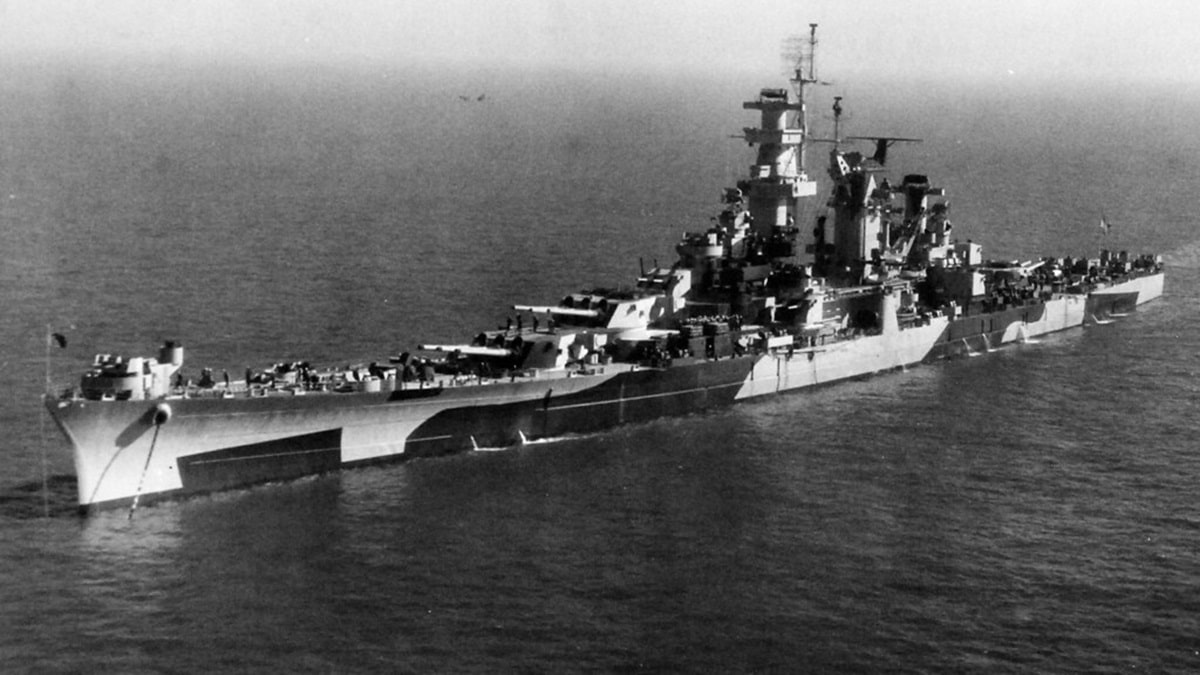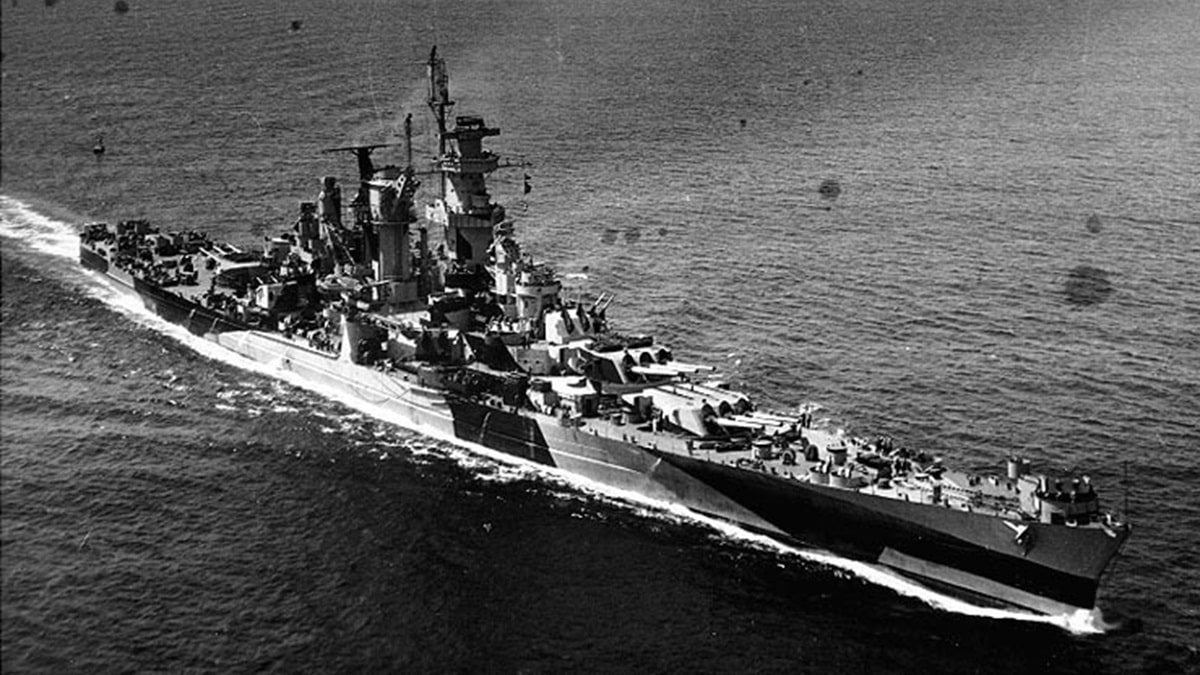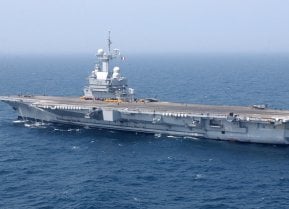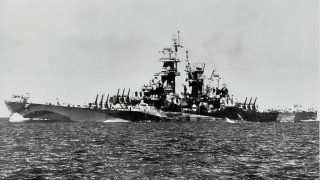Alaska-Class: The Battlecruisers the U.S. Navy Should Never Have Built
Straddling the line somewhere between a cruiser and a battleship, the Alaska-class occupied a weird middle ground: a battlecruiser.
Straddling the line somewhere between a cruiser and a battleship, the Alaska-class occupied a weird middle ground. While technically a cruiser, the Alaska was clearly much bigger than other cruisers. Yet, the Alaska was too small to be a true battleship. The class’s resultant nickname hit at the Alaska’s ambiguous nature: battlecruiser. The U.S. Navy acknowledged that the Alaska was not quite a cruiser; heavy cruisers were typically designated “CA,” whereas the Alaska was designated “CB” for large cruiser.
Alaska-Class: Measuring Up
To call the Alaska a cruiser would be an undersell. Actually, the Alaska was designed to kill cruisers.
“Standard American heavy cruiser design, like the 673 feet-long, 14,500-ton Baltimore-class, were armed with (9) 8” guns, (12) 5” guns, and (24) 20mm guns,” wrote National World War II Museum curator James Linn. “By comparison, the Alaska’s were 808 feet-long and weighed 29,771 tons. They were armed with (9) 12” guns, (12) 5” guns, (56) 40mm guns, and (34) 20mm guns.”
In addition to guns, the Alaska had size. The battlecruiser measured 808.5 feet long with a 91-foot beam and displaced 34,253 long tons (when fully loaded). For propulsion, the Alaska relied on four-shaft General Electric steam turbines, double-reduction gearing, and eight Babcock & Wilcox boilers. The propulsion system was good for 150,000 horsepower, a top speed of 33 knots, and a range of between 12,000 and 14,000 nautical miles.
Still, the Alaska was no battleship – and was indeed vulnerable to the heavier warships.
“The Alaska’s had adequate armored protection from shellfire from enemy cruisers, but were at a severe disadvantage against battleships,” according to Linn.
Vulnerability to battleships wasn’t the Alaska’s only problem, either. Another problem that kept Alaska sailors on edge was “a complete lack of a torpedo defense system.” For the Alaska, “attacks by German U-boats or the infamous Japanese Type 93 “Long Lance” torpedoes were a constant worry.”

Why a Battlecruiser?
The provision to create a battlecruiser was embedded within the Vinson-Walsh Act, a 1940 piece of legislation known as the Two-Ocean Navy Act – which increased the size of the U.S. Navy by 70 percent (to meet the burgeoning dual threat of Germany and Japan). “While the act authorized construction of 257 ships,” Linn explained, “the most notable provisions of the legislation included the building of 18 aircraft carriers, seven battleships, and six Alaska-class cruisers.”
The attack on Pearl Harbor caused war planners to reevaluate many things, including the utility of the battleship. “Construction on new, big-gunned vessels like battleships was significantly scaled back or outright canceled,” Linn said. Why? Because “time and technology had caught up with the battleships. The aircraft carrier now formed the backbone of naval fleets moving forward.” Still, revelations about the battleship did not clarify the future of the battlecruiser.
Typically, cruisers are used as escorts, accompanying carrier task forces, offering protection against enemy surface vessels and aircraft. But the Alaska was built for a different purpose. The German Kriegsmarine had retooled with powerful ships; the Imperial Japanese Navy was rumored to have a battlecruiser. In Washington, the Navy grew concerned that it “would not have an answer for these ships” and that U.S. Naval vessels would be vulnerable—the answer: the Alaska battlecruiser.

Initially, the Navy expected to receive six Alaska battlecruisers. But shifting circumstances and “the quickly changing reality of naval combat” inspired the Navy to cut their order down to just three Alaskas. The resources that would have gone towards the remaining three Alaskas were instead allocated towards carriers, escorts, and landing craft.
The Alaska-Class in Action
The three Alaska-class ships launched were the namesake Alaska, the Guam, and the Hawaii. None enjoyed a particularly long service career. The Alaska was active for just 32 months. The Guam lasted just 29.
The Alaska-class entered service during the last year of the war, participating in the Pacific Theater. And while Japan was functionally defeated by the time the Alaska entered the fray, Japan was still refusing to capitulate and still posed a threat to American vessels in the theater.
Notably, the Alaska supported the landings on Okinawa. And, less notably, the Alaska was used to protect the Franklin (an Essex-class carrier) while she was on her way for repairs in Guam.
The ships were decommissioned and mothballed in 1947. In 1958, the Bureau of Ships conducted two feasibility studies, to gauge whether the Alaska and Guam could be converted into guided-missile cruisers. Ultimately, the option was deemed too expensive.
While the Alaska-class did not leave behind an illustrious service record, the ships did leave behind some controversy. The battlecruisers “very existence and usefulness [were] hotly debated” in the 1940s, and still is today. “Were these ships cruisers or were they American battlecruisers? Were they relics of a long past era and obsolete before they even entered service?”
About the Author
Harrison Kass is a prolific defense and national security writer with over 1,000 articles published. An attorney, pilot, guitarist, and minor pro hockey player, Harrison joined the US Air Force as a Pilot Trainee but was medically discharged. Harrison holds a BA from Lake Forest College, a JD from the University of Oregon, and an MA from New York University. Harrison listens to Dokken.
All images are Creative Commons.


